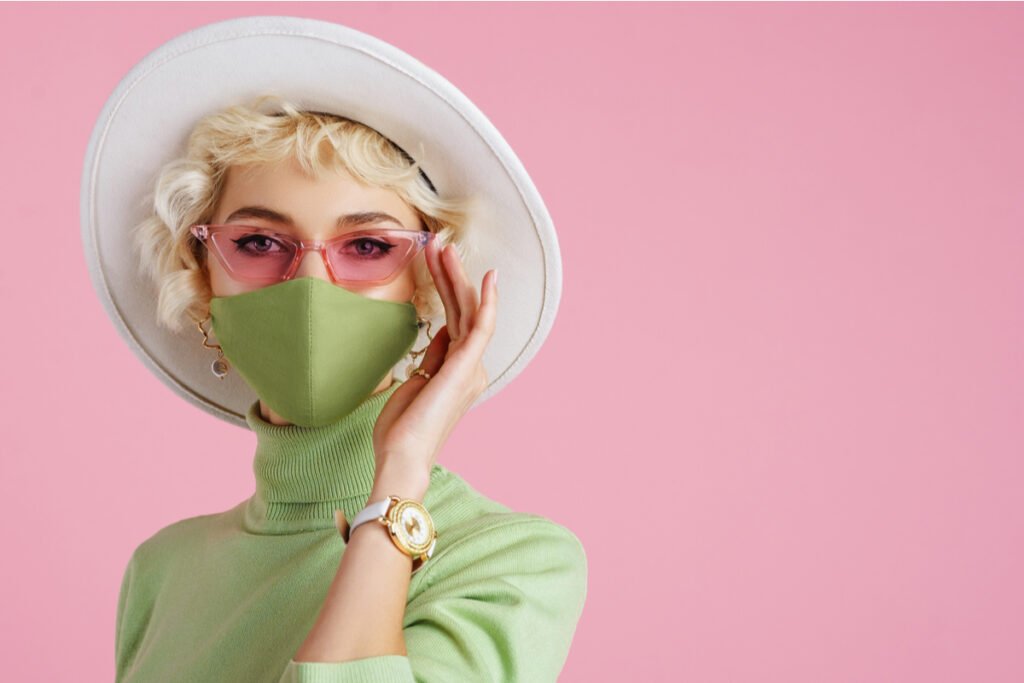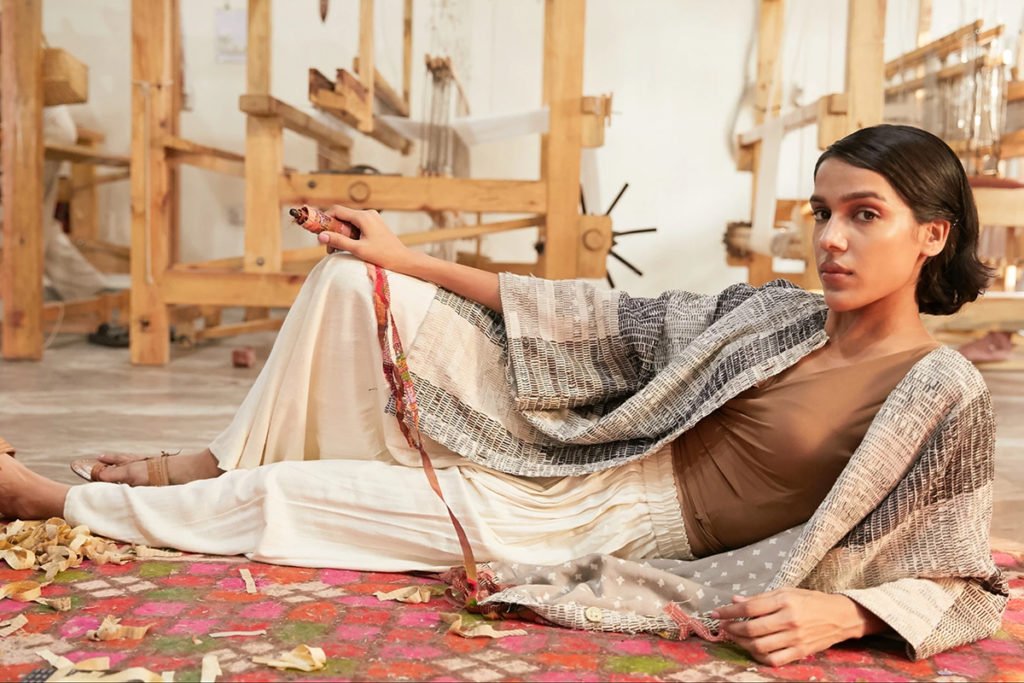Shadowed by the Qutub Minar, a white-walled colonial bungalow, where the sun peeks through the canopy of a banyan tree, Olive Bar and Kitchen stands as the culinary pride of Delhi. Owned by the award-winning restaurateur AD Singh, the blue and white themed restaurant boasts of its ambiance in front-of-the-house, while Head Chef Dhruv Oberoi with his talented fellow chefs work at full tilt to create ‘art on a plate’ at the back-of-the-house.
Oberoi, who trained under his hero, Ferran Adrià, the exceptional Catalan chef, began his journey with Olive as a management trainee. He certainly brings experience to the table after being associated with the Mediterranean restaurant for years. In a conversation with Brown magazine, he talked about the secret behind a successful restaurant, his favourite street food in Delhi, why he has been cooking diurnally, and much more.
In fact, the chef has been keeping himself quite busy during the lockdown. “I might sound very spiritual when I say this, but I took this time to think about myself, how life has been for me before lockdown, and how I want to pursue it,” he says. His life has completely changed, at least in terms of lifestyle. Waking up early in the morning, going for a run, even having a little workout session at home, and then indulging in a healthy breakfast—this slight lifestyle change is something that he hopes to continue even after the lockdown.

While he has brought in a few variations in his lifestyle, the effect of the pandemic on the food and restaurant industry is quite varied. Speaking of it, Dhruv gave us an example of his own team in Olive, Delhi. The delivery team still gets calls every now and then asking if the restaurant is open. However, Olive’s delivery and takeaway systems have entirely collapsed under the lockdown.
“Olive, the brand, is about the destination for everyone.”
Says Dhruv Oberoi
Surprisingly, more people want to dine out but Oberoi understandably fears for the health of the staff. He explained how if any of the staff members tested positive, it would be quite difficult to figure out who they had been in contact with. Despite all this, he is full of hopes. The chef assures that back-of-the-house the restaurant is taking all precautions, from the basic hygienic process to a deep sanitization. “I am hoping business will catch up. We’ll get to know the actual scenario when we are serving people. Things will come back with a bang.”
We observed a surge in cooking during this lockdown. People have excessively indulged in cooking. We asked the chef for his view. He agreed that, of late, he too has begun to realise how cooking can serve as therapy. “Though I have been cooking for ages I never realized it,” he noted. He expressed how on days when he feels stressed, he leaves his office and heads over right to the kitchen. Going through the process of cooking and plating, he instantly feels good. Even now, while he’s at home, he notices the positive changes in his lifestyle and owes it all to the art of cooking. “My entire Instagram feed is flooded with cooking videos, so it must be something. Food is therapy,” he asserted.
The journey so far
Dhruv Oberoi has been in the culinary industry for over 12 years now. Speaking of the early days he mentioned, “I have been with Olive since the beginning, through its various shifts.” However, Ai (now Guppy), which was the first modern Japanese restaurant in Delhi, became his next destination. The chef found himself at Ai because he wanted to explore something new. “Japanese (cuisine) was a hot popular thing at that time, and it is till now,” he remarked.

Talking about his experience of working with Japanese chefs for four years, Oberoi states that there’s much that we can adapt to in our Indian cuisine. To list the major ones he said, “There are two things – freshness and skills.” He further mentions that they are the highest-priced in the world simply based on the level of skills that they have mastered over the years. Secondly, when it comes to the freshness, they treat the produce as ‘a piece of gold.’ It’s not about how expensive the ingredients are but they worship the food they make. He goes on to explain that Japanese chefs are unbending and tend to take no shortcuts when it comes to the cooking process.
Later, Oberoi got the opportunity to work in Spain. Reminiscing, he claimed, “Back in college, I’d dream of working with this particular chef, Ferran Adrià. I got a scholarship from the Spanish government and eventually, I worked with him for a year.” Soon, he was back at Olive because he believed to have found the very best in India. “At that particular time, there weren’t good stand-alone options barring one or two. Since then, the restaurant has evolved in multiple aspects, including their menu and their style, and the journey goes on,” he continued.
When asked for the formula behind a successful restaurant, Oberoi gave credit to AD Singh. “He always believed in the brand and gave immense freedom to his team. He brought the ‘standalone’ concept to India,” he said. The chef assures that the formula is quite simple – to think ahead of the times while being grounded in the product one creates. He advised that especially in F&B the product shouldn’t be too vast or formulated in such a way that people don’t understand it at all. Striking a balance is crucial. He also emphasized the need for fresh ideas and concepts every year for the restaurant.
“Consistency is also a key ingredient.”
Says Dhruv Oberoi

Olive bar and kitchen not only serves exquisite food but has also organized several culinary events such as the ‘Flea by Nite’, Delhi’s first Gin Festival with Food Talk India, and many more events.
The Science of Cooking
To unravel the benefits of bringing food and sustainability together, Dhruv first points out that the concept needs to be learned since childhood. “Sustainability is a concept that is in fashion right now, but it needs to be in our culture,” he confirms. At Olive, his team often tries to create something sumptuous out of food waste but he clarifies that they don’t usually highlight it. He explains the reasoning behind this – “For the consumer, it may sound negative in a way. They don’t want to hear that a certain dish is made from ‘waste’.”
He, however, believes that it is well possible to teach people how to use anything basic such as banana peels, pumpkin seeds, or even papaya seeds. He went on to mention about a chutney called ‘Thoran’, which is made out of banana peels in Kerala. Taking inspiration from this southern dish, the chef made a sauce out of the same ingredient which is packed with nutrients.
At Olive, one of their signature salsa requires all the ingredients to be pounded on the table. They then roast the onion as well as the garlic with their peels. While Oberoi feels that this technique brings out a great flavour from the peel, a few diners feel that the peel is part of residue and shouldn’t be used in the dish. “Acceptance and understanding is vital from the customers’ side too,” he commented. He has often found himself trying to explain to his customers the logic behind using the peel, which gives it that unique flavour and texture. “There is science behind why you cook with or without the peel,” he added.

He then went on to explain his particular views on ‘molecular gastronomy’ as well. Returning from Spain, he witnessed this subdiscipline trending in India when people had just discovered molecular gastronomy. But he feels that most people ridiculed the concept and wants chefs everywhere to understand that it’s not just a part of the garnish or presentation; rather, he wants them to understand the science behind it.
“We eat with our eyes first, but in the end, it has to taste brilliant.”
Says Dhruv Oberoi.
Ferran Adria, who has majorly contributed to the study and understanding of molecular gastronomy, uses all the chemicals to stabilize the food wherever required. “I think I have learned from the pioneer,” he declared. Describing Adria’s process he explains, “He uses a gelatin sheet made from seaweed rather than the gelatin derived from animal bones, thus creating all the fun textures, all the elements and its flavours.” Oberoi disapproved of the use of liquid nitrogen just for the smoke effect. “You need to understand why nitrogen is used and how to use it in a recipe rather than just adding it as a side element or a garnish. If you use it in the right way, it can do wonders. But you need to know the basics of that particular chemical,” he continued.
When asked about his particular interests with regards to the diverse food culture in India, Oberoi went back to the sustainability angle and said, “It’s no more a trend for a restaurant to survive on all things imported; now imported food is labelled negative.” He observed that most people nowadays appreciate produce that is grown locally rather than consuming something that’s imported, unless it isn’t produced in India at all. Over the last two years, he has entirely embraced the local produce. Using bitter gourd or ivy gourd in a European dish is next to unthinkable, but he has given it a chance. “I try to introduce European cuisine with all the desi vegetables,” he adds.
Olive has several tie-ups with numerous local farmers. While vegetables are grown at the outskirts of Delhi, all the fruits, berries, and spices are sourced from other parts of India. The chef has also incorporated a Kashmiri artisanal cheese called Kalari, which has a beautiful texture and taste albeit slightly fermented. The restaurant also works with a small organization that provides them with a homemade Java Plum elixir. They make a particular drink made from Mango Ginger (a type of garlic that has the flavour of raw mangoes, which is grown in parts of Bihar and Bengal). He sources a particular grain from northeast India – the seeds of the bamboo plant – to make risotto. These several tie-ups help them in getting the best of the local produce.
Understanding the Chef
We discovered that Oberoi is to be found at parts of Old Delhi when craving street food in Delhi. “I still crave Aslam chicken every third or fourth day. It is a popular shop that is famous for its Tandoori chicken,” he says. He is also a huge fan of Haldiram’s, declaring his love for their Raj Kachori that he came upon in his first week in Delhi.
Apart from these, the chef has his love for Japanese food. “Just give me a bowl of Japanese steamed rice with sauce. I make a sauce out of dried tuna, mayonnaise, and Korean chilli, among other things. That’s my go-to meal,” he said. Taking his love further, Oberoi also remarked that he would love to visit Japan as part of a culinary tour, adding Peru, and South America in general, on his list.

When asked about his favourite food show on Netflix, he brought up ‘Cooked’, a series that explores underrated recipes. Referring to an example from the show he said,“In Brazil, people make homemade alcohol wherein they take cassava roots, chop it up, chew it, spit it out and then make alcohol out of it.” Although he initially found the idea bizarre, he researched the reason behind it and found out that the bacteria in saliva makes for a healthier version of fermentation. He also hinted at another series on Indian street food that features the heritage of food from different parts of India.
When asked about the most underrated ingredient, he replied with fresh turmeric, and wished to see food that would highlight it to the level it deserves. He also told us that he couldn’t stand the sight of blood on his meat, when asked about his food-related pet peeves. “That’s the reason I’m not a big fan of meat; I like seafood better.” He also joked about how he had not tasted Burrata until last month. “Though I have curated many dishes and variations with it, I’d never actually tasted it.” he went on to say that he would never include anything on the menu that he felt did not taste good.
After going through the bêtes noires, the chef mentioned a few food combinations that he finds downright blasphemous in the culinary world. He brought up that ketchup is not served at Olive and found it insulting when people ask for ketchup with their pizza. Also, he finds it illogical when people eat pasta with garlic bread. He explained that from a chef’s point of view, they are eating one form of starch with another. “The other thing I hate is pineapple on a pizza,” he adds.
When asked who he would invite if he could host anyone – living or dead – he remarked, “I would love to invite Lady Diana and serve Khichdi to her.”
Lastly, the chef told us about what made him the happiest when at work – “When I curate the menu and finally see it in its realistic form. The first day of a menu launch makes me the happiest.” He also revealed that if not a chef, he would pursue a career in interior designing or architecture.
First thoughts
Superfood – Millets
Midnight snack – Roasted peanut and jaggery
Food bloggers – (With all due respect to them) Gather some knowledge about food
Fusion food – Confusion
Gordon Ramsay – A kind-hearted person
Last meal – Khichdi





